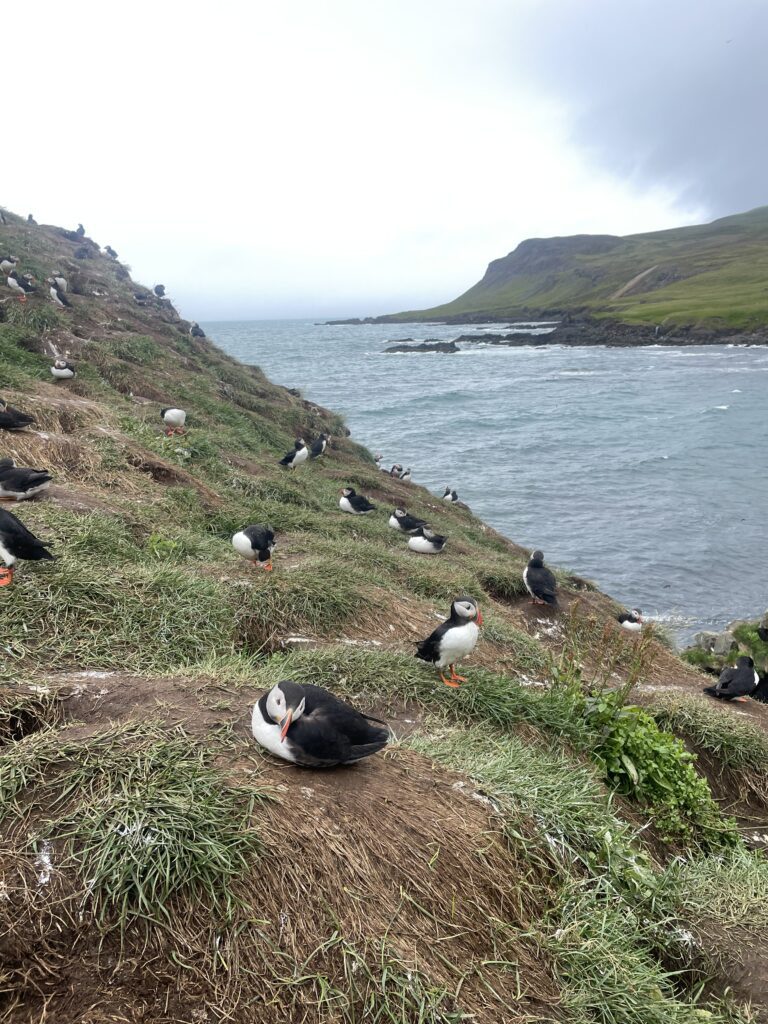
PUFFINS
In Iceland, the Atlantic puffin (Fratercula arctica) is much more than a cute seabird – it’s a national treasure, a symbol of resilience, and a seasonal guest that draws thousands of visitors each summer.
These fascinating birds spend most of their lives out at sea and return to Iceland’s cliffs each spring to nest and raise their chicks, called puffling. With their vibrant beaks, comical waddle, and daring ocean dives, puffins are irresistibly charming — and increasingly at risk.
Climate change, overfishing, hunting, and habitat loss have deeply impacted puffin populations – which is why awareness and conservation efforts matter now more than ever.
CURIOSITIES ABOUT PUFFINS
- Puffins spend most of their lives at sea, returning to land only to nest.
- Puffins can flap their wings up to 300 times per minute when flying.
- They can dive up to 60 meters (200 feet) underwater.
- Puffins mate for life and often return to the same burrow.
- Over 60% of the world’s puffin population prefers Iceland as home.
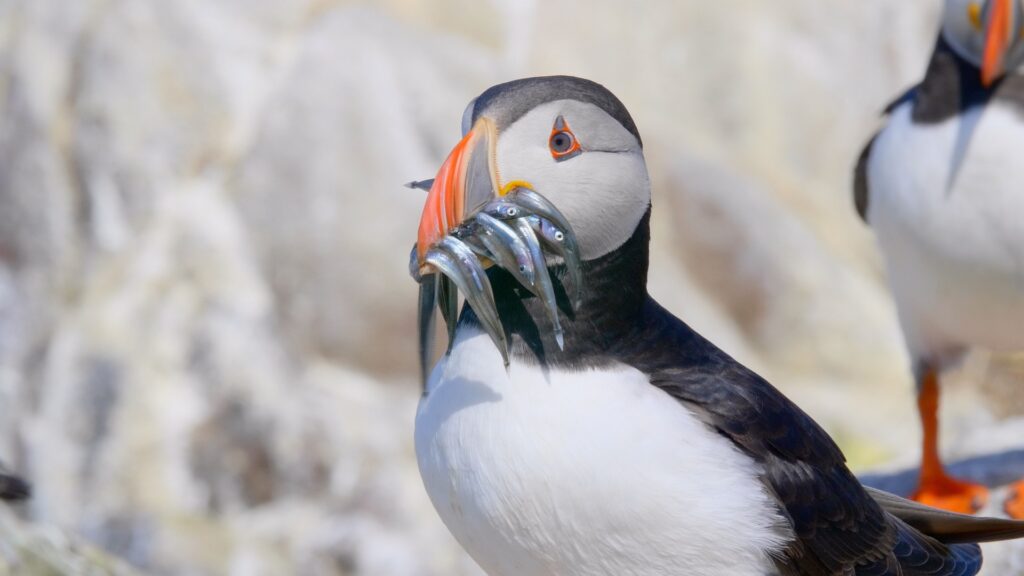
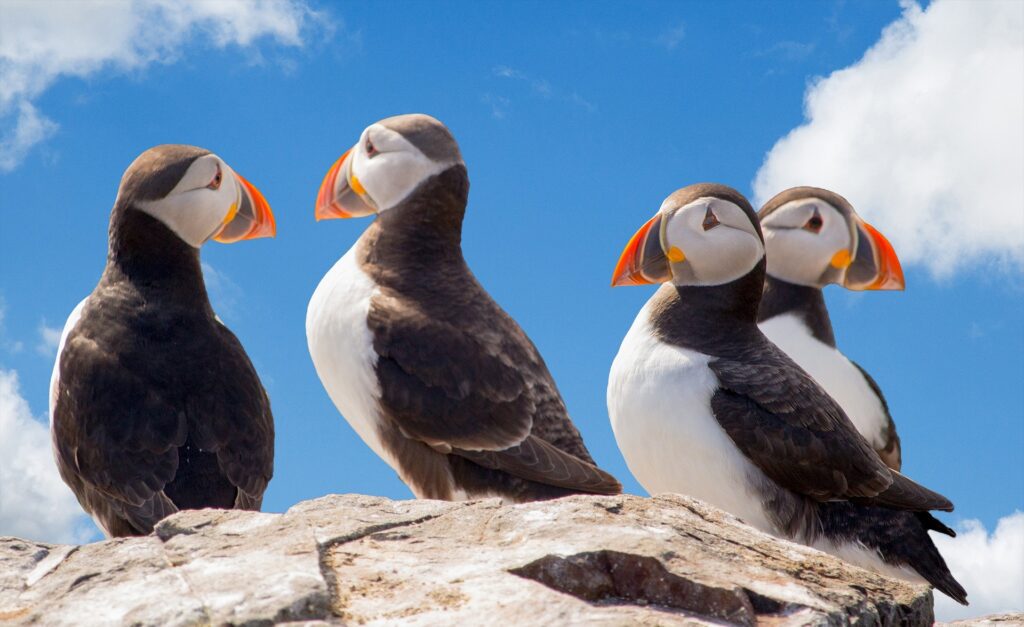
PUFFLING RESCUE IN THE WESTMAN ISLANDS
Every summer in Iceland’s Westman Islands, locals and visitors help rescue lost baby puffins (pufflings) that get disoriented by town lights. They’re collected at night and safely released to the sea by morning — a cherished tradition in puffin conservation.
HOW YOU CAN HELP
If you visit the Westman Islands in summer, you may witness or even take part in the puffin rescue.
Be respectful, follow local guidelines, and remember: every rescued puffin counts.
One of our goals is to support this effort by donating part of our sales to local organizations involved in animal conservation, including initiatives like puffin rescue.
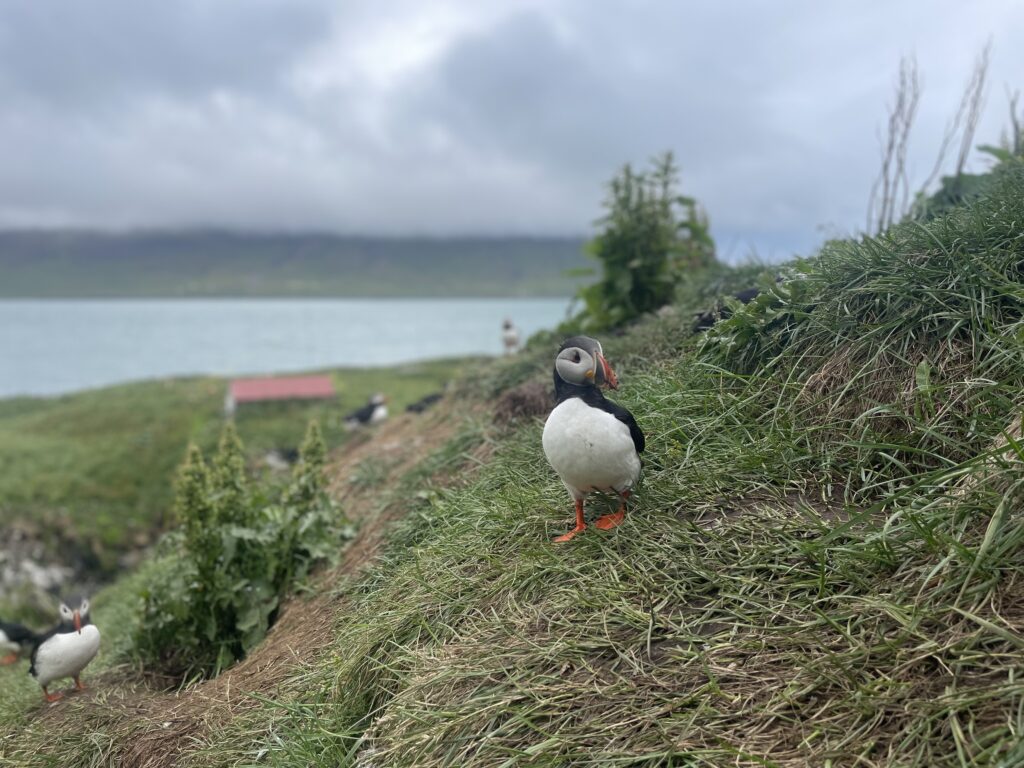
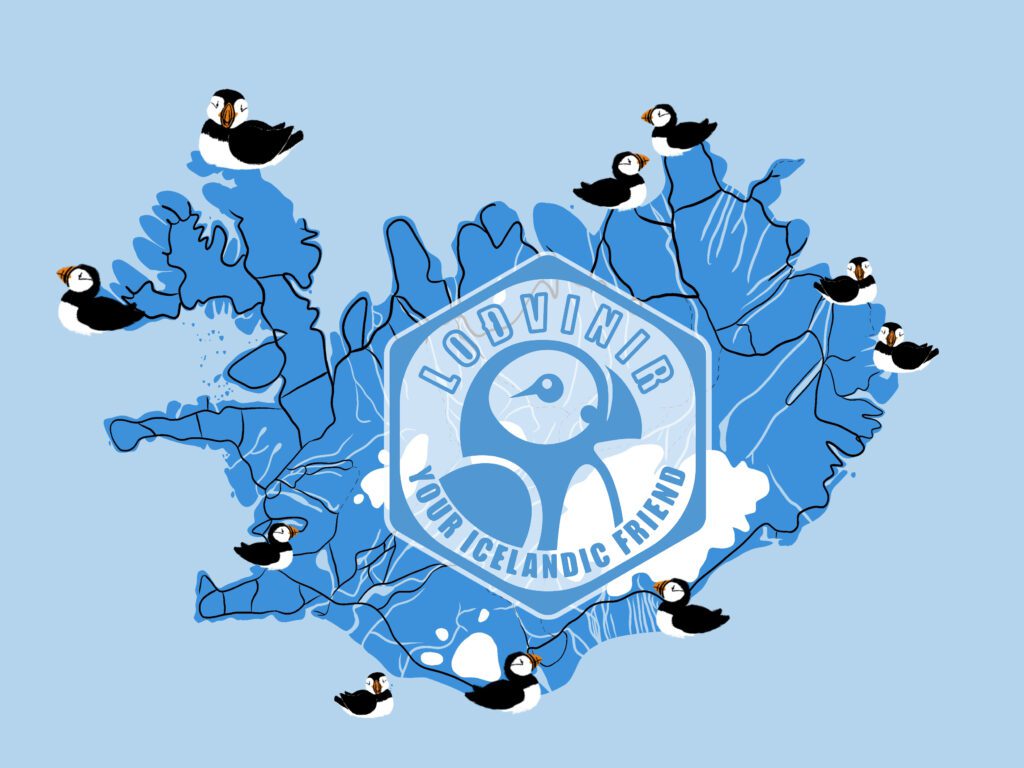
SOME PLACES IN ICELAND
WHERE TO SEE PUFFINS
HOW TO SEE PUFFINS IN THE WILD
Looking to spot puffins in their natural habitat in Iceland? Puffin watching is one of the most unforgettable wildlife experiences — but it’s important to do it with care and respect for these protected seabirds.
Best Time to Visit in Iceland
Puffins come to nest from late April through mid-August, with the highest activity in June and July. Visit early in the morning or late evening for the best sightings.
STAY QUIET AND CALM
Puffins get scared easily. They are sensitive to stress and disruption. Move slowly and speak softly so you don’t disturb them or other wildlife nearby.
KEEP YOUR DISTANCE
Watch puffins from far away. Use binoculars or a zoom lens instead of getting close. This helps keep them safe and stress-free.
DO NOT TOUCH THE PUFFINS OR THEIR BURROWS
Puffins are wild animals. Never try to touch or hold them, even if they seem friendly — it can hurt them.
DO NOT FEED PUFFINS
Feeding puffins can make them sick or change their natural behavior. Let them find food on their own.
STAY ON THE PATH
Puffins nest in the ground, near the cliffs. Stay on marked trails so you don’t accidentally step on their burrows.
